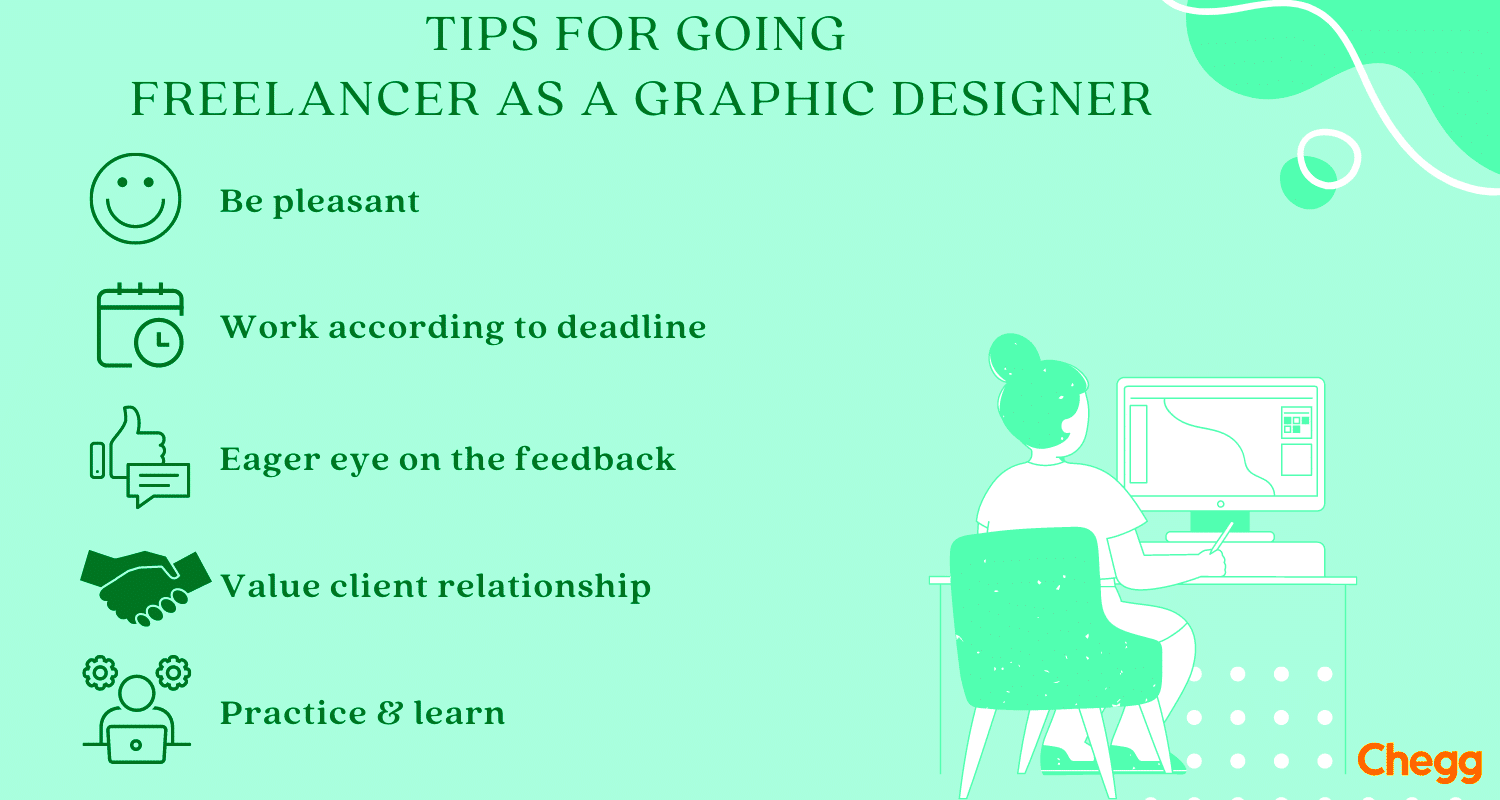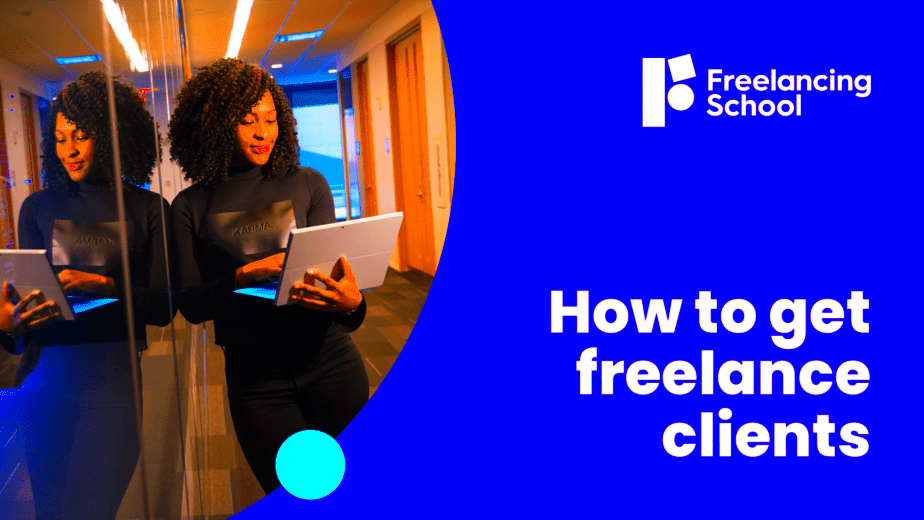Freelance design is an exciting and flexible career path for creative individuals. As a freelance designer, you have the opportunity to work on a variety of projects, choose your clients, and set your own schedule. The digital world has made it easier for designers to find work globally, whether it's graphic design, web design, or product design. But to succeed, you need a combination of skills, marketing, and business acumen. In this guide, we'll explore how you can become a successful freelance designer and build a strong client base.
Essential Skills Every Freelance Designer Should Have

To be successful as a freelance designer, there are certain skills that will set you apart. Here’s a list of key skills you need:
- Creativity: This is the foundation of your work. Whether it's coming up with fresh design concepts or creating unique solutions for clients, your creativity will always be in demand.
- Technical Skills: Knowing how to use design software like Adobe Photoshop, Illustrator, and other tools is essential. You should also have a good understanding of web design principles, HTML, and CSS for digital projects.
- Communication: As a freelancer, you'll be working closely with clients. Clear communication helps you understand their needs, provide feedback, and build lasting relationships.
- Time Management: Managing deadlines and working on multiple projects at once is a big part of freelancing. Efficient time management ensures you stay on track and meet client expectations.
- Problem-Solving: Design is about solving problems. You need to approach each project with a mindset that addresses the client’s needs while delivering high-quality work.
By mastering these essential skills, you’ll have a solid foundation for success as a freelance designer.
Also Read This: How to Get Paid from Fiverr in Pakistan
Setting Up Your Freelance Design Business

Starting your own freelance design business can feel overwhelming, but it’s completely achievable with the right steps. Here’s how to get started:
- Choose Your Niche: Decide on the type of design work you want to focus on. This could be anything from logo design to website design or illustration. Specializing can help you stand out in a competitive market.
- Create a Portfolio: Your portfolio is a vital tool in attracting clients. It should showcase your best work, demonstrate your range, and highlight the results you've achieved for past clients. Be sure to include both personal projects and client work.
- Set Your Rates: Determine how much you want to charge for your services. Research the average rates in your niche and adjust based on your experience and expertise. You can charge hourly or per project depending on the work.
- Build an Online Presence: In today’s digital world, it’s crucial to have an online presence. Create a professional website to showcase your portfolio, include a contact form, and offer details about your services. Additionally, build a presence on platforms like Behance, Dribbble, or even Fiverr to increase visibility.
- Register Your Business: Depending on where you live, you may need to register your freelance business. This can help you with taxes and give your business a professional touch. Check local regulations to understand what steps are needed.
By setting up a clear structure and establishing your business foundation, you can begin your freelance design journey with confidence.
Also Read This: A Good Girl’s Guide to Murder: Free Full Series on Fiverr
How to Create an Impressive Portfolio

Creating an impressive portfolio is one of the most important steps in your freelance design career. It's the first thing potential clients will look at to determine if your style and skills match their needs. Your portfolio should not only showcase your best work but also highlight your versatility and creativity. Here are some tips to build a standout portfolio:
- Choose Your Best Work: Only include your best pieces. It’s better to have fewer high-quality projects than to overwhelm clients with too many. Show a variety of designs that demonstrate your skills across different styles and mediums.
- Showcase Your Process: Clients want to know how you approach a project. Including case studies that explain your design process—from concept to final product—gives insight into your workflow and problem-solving skills.
- Make It User-Friendly: A clean, easy-to-navigate portfolio will keep potential clients engaged. Make sure the design is simple and intuitive. They should be able to find examples of your work quickly without any hassle.
- Include Testimonials: Social proof goes a long way. If you’ve worked with clients before, include their feedback in your portfolio. Positive reviews from satisfied clients build trust and credibility.
- Keep It Updated: Regularly update your portfolio with new projects. This shows that you’re active and keeps your work fresh in the eyes of potential clients.
Your portfolio is a reflection of you as a designer. Make sure it’s a professional, polished, and true representation of your skills and experience.
Also Read This: Best 10 Fiverr Gigs for SEO Services in 2024
Finding Clients as a Freelance Designer
Finding clients is one of the most challenging aspects of freelancing, but it’s also one of the most rewarding. Once you’ve set up your portfolio and established your brand, the next step is to get your name out there and start attracting clients. Here are several strategies to help you find freelance design work:
- Use Freelance Platforms: Websites like Fiverr, Upwork, and Freelancer can help you connect with clients who are actively looking for designers. These platforms allow you to create a profile, bid on projects, and get reviews from clients.
- Network with Others: Networking is key to building lasting relationships and finding new clients. Attend industry events, join online design communities, and participate in social media groups to meet people who might need your services.
- Reach Out to Businesses Directly: Don’t wait for clients to come to you—reach out to businesses and startups that could use your design services. Craft a personalized email and offer value upfront, showing them how you can help enhance their brand.
- Leverage Social Media: Social platforms like Instagram, LinkedIn, and Pinterest are great places to showcase your work and attract attention. Share behind-the-scenes content, your design process, and completed projects to increase visibility.
- Ask for Referrals: If you’ve worked with satisfied clients, ask them to refer you to others who might need your services. Word-of-mouth recommendations are often the best way to gain new business.
Finding clients takes time and persistence, but with the right strategies in place, you’ll be able to build a solid client base and grow your freelance design business.
Also Read This: How to Feature My Gig on Fiverr
Marketing Your Freelance Design Services
Marketing your freelance design services is crucial to stand out in a competitive industry. Even if you're an excellent designer, clients won’t know about you unless you actively promote yourself. Here are several strategies to effectively market your design services:
- Build a Strong Online Presence: Your website is your digital storefront. Make sure it’s professional and highlights your portfolio, services, and contact information. Optimize it for SEO (search engine optimization) so that potential clients can easily find you.
- Content Marketing: Start a blog or create content related to design. This not only positions you as an expert in your field but also drives traffic to your website. Share tips, design trends, and case studies to engage potential clients.
- Offer Special Promotions: Consider offering special deals or discounts to attract new clients. For example, you could offer a discounted rate for first-time clients or bundle services together for a reduced price.
- Collaborate with Other Creatives: Partner with other freelancers, like copywriters, photographers, or developers. You can cross-promote each other's work and collaborate on larger projects that you might not be able to handle alone.
- Invest in Paid Advertising: If you have the budget, you can use paid ads on platforms like Facebook or Google to reach a larger audience. These ads can be targeted to specific groups of people based on their location, interests, or online behavior.
Marketing is an ongoing effort, but with consistent promotion and the right approach, you can attract the clients you need to grow your freelance design business.
Also Read This: What is a Gig on Fiverr?
How to Manage Your Freelance Design Projects
Managing your freelance design projects efficiently is key to delivering high-quality work on time while keeping clients happy. As a freelancer, you’re in charge of every aspect of a project—from initial discussions to final delivery. Good project management ensures that everything runs smoothly, avoiding delays and confusion. Here are some tips to manage your projects effectively:
- Set Clear Expectations: At the beginning of every project, clearly define the scope, deadlines, and payment terms with your client. This helps prevent misunderstandings later on and keeps the project on track.
- Use Project Management Tools: Tools like Trello, Asana, or Monday.com can help you organize tasks, set deadlines, and track your progress. These tools are especially useful for managing multiple projects at once.
- Break Projects Into Manageable Tasks: Large design projects can feel overwhelming. Break them down into smaller, more manageable tasks, and focus on one task at a time. This will help you stay organized and reduce stress.
- Set Realistic Deadlines: Don’t overpromise on timelines. Give yourself enough time to do your best work while also accounting for potential revisions and unexpected delays. It’s better to deliver early than to risk missing a deadline.
- Communicate Regularly: Keep your clients updated on your progress. Regular communication ensures they feel involved and allows for any changes or feedback to be addressed early in the process.
- Stay Organized with Finances: Keep track of payments, invoices, and expenses. Use tools like QuickBooks or FreshBooks to handle your freelance finances easily. This ensures you get paid on time and helps with tax preparation.
Effective project management will not only keep your clients satisfied but also reduce your workload and help you deliver top-notch designs on schedule.
Also Read This: How Long Does It Take to Become a Top Rated Seller on Fiverr?
Frequently Asked Questions
Here are answers to some common questions that new freelance designers often have:
- How do I set my freelance design rates? Your rates depend on your experience, niche, and the complexity of the work. Research what other designers in your area or niche are charging and adjust based on your skills. Don’t undersell yourself—set rates that reflect the quality and value you offer.
- How do I handle difficult clients? Communicate openly and professionally with difficult clients. Set clear boundaries and ensure that all project details are in writing to avoid confusion. If a client is unhappy with your work, try to resolve the issue calmly and seek a solution that works for both of you.
- How can I find high-paying clients? To attract high-paying clients, focus on building a strong portfolio and marketing yourself effectively. Network with professionals in your niche, attend industry events, and offer premium services that deliver real value. High-paying clients often look for experienced designers who can solve their problems creatively.
- How do I deal with slow payments? Always have clear payment terms in your contracts. If a client is slow to pay, send a polite reminder or invoice follow-up. Consider using a service like PayPal or a payment platform that allows you to charge upfront or on a set schedule to avoid this issue.
- Do I need a business license as a freelance designer? This depends on your location. In some areas, you may need to register as a business for tax purposes. Check with your local government or a tax advisor to ensure you’re compliant with local laws.
By addressing these common questions, you can feel more confident navigating the world of freelance design.
Conclusion
Becoming a freelance designer is an exciting journey filled with creative freedom, but it requires more than just design skills. By building a strong portfolio, finding clients, marketing your services, and managing projects efficiently, you can establish a successful freelance career. Remember that freelancing requires persistence, patience, and adaptability. Over time, you’ll build a solid reputation, attract higher-paying clients, and grow your business. Stay focused on your goals, and continue learning and adapting to industry trends to stay competitive. With dedication and smart strategies, you can thrive as a freelance designer.




